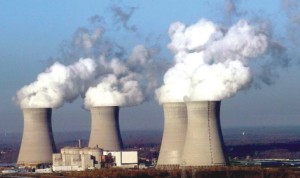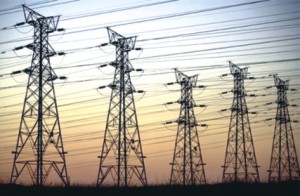| Home - Back Issues - The Team - Contact Us |
 |
| Volume 10 |Issue 13 | April 01, 2011 | |
|
|
Perspective THE NUCLEAR RENAISSANCE If we are going to eventually face the risks, Jennifer Ashraf Kashmi
The world is completely dependent on energy resources. Fifteen years ago almost all the cars in Bangladesh relied on petrol and octane. Load-shedding was still an integral part of our lives but it was manageable with only an outage for an hour per day and viewed as a time of rest and relaxation. Pollution existed, but climate change was a worrying concept for the future. After all, we still had time. Then petrol prices rocketed sky high and we saw the dawn of the age of natural gas as alternative fuel. The question which now arises is once the natural gas and coal and fossil fuel reserves are depleted, what Bangladesh's natural future fuel resources will be. Do we then begin destroying our forests and start burning timber for energy? How long will that last? Six months? One year? Or, at best, two years? In the last 10 years, whilst Bangladesh has changed focus from fossil fuels to natural gas, the rest of the world has taken it one step forward. In December 2010 the number of nuclear reactors recorded in the world stood at 441 which were operable and another 63 under construction. Many countries are now involved in this nuclear energy initiative. It is not surprising that the USA is on top of the list, but they are also accompanied by Russia, Finland, France, China, Korea, Japan, India and the UAE. All these countries are either already making use of nuclear energy or are planning to do so in the future. Additionally Russia is also helping Vietnam and Venezuela to obtain nuclear power. Pakistan was recognised as the first Muslim country to implement nuclear energy projects. This sudden influx of interest in the generation of nuclear power as an alternative energy source was termed 'the Nuclear Renaissance'. Our Asian neighbours India and Pakistan (predominantly Muslim country like ours) have not lagged behind either. So, while there was so much nuclear development internationally over the last decade, why is Bangladesh still backward in this respect? In 2006 violence over power cuts in a northern Bangladeshi town left at least 20 people dead in clashes between police and farmers who had demanded increased power supply for irrigation. The caretaker government which took over in January 2007, after an emergency was imposed and elections cancelled over vote-rigging allegations, made it one of its top priorities to tackle the power crisis. The same year Bangladesh obtained approval from the International Atomic Energy Commission and South Korea put in an offer to finance 60% of the project. That was in 2007, it is 2011 now. Bangladesh's per day energy requirement owing to the booming textile and other industries can be estimated at 5500 megawatts, and currently there is an estimated shortfall of 2000 megawatts, an attempt to regulate which is resulting in severe power shortages to residential and commercial areas. In order to successfully meet the 5500 megawatts demand daily, we need at least 6000 megawatts, which will also ensure that unforeseen additional electricity consumption does not impair power productivity and regulation. So, how will the implementation of Nuclear energy be beneficial in combating the energy shortage problem, when coal and fossil fuels have remained unsuccessful in doing so? The answer lies within the difference of energy released between the same amount of coal and nuclear resources. Nuclear energy is the heat energy produced from the changes in an unstable nucleus. This can either be categorised into nuclear fusion (the joining of two lighter nuclei to form a heavier one) or nuclear fission (the splitting of a heavy nucleus into two lighter ones). Both of these processes release a tremendous amount of energy and much less pollution, as compared to fossil fuel burning. One kilogram of natural uranium will yield about 20,000 times higher energy than the same amount of coal. The economic growth of a country like Bangladesh is directly proportional to its power production. Therefore to ensure steady economic growth, we would also have to ensure that power production increases by at least twice the rate of economic growth. The only way this is even remotely achievable is via nuclear energy.
With the recent crisis in Japan, many groups will argue that it's not worth taking risks with respect to construction of nuclear power plants. However, viewing the differences with an objective eye, it's difficult to determine which would be worse a nuclear reactor meltdown or an ammonia tank explosion at a coal site. Nuclear meltdown has the potential to expose plant personnel to unhealthy levels of radiation, possibly leading to cancer. It also has the potential to send a radioactive cloud a few miles away from the plant. Exposure time in the cloud will be short since the cloud travels with wind and the danger is really when the cloud settles on houses, cars and people's clothes. Realistically, under the worst case scenario, people within a 30 mile radius could potentially be exposed to unhealthy radiation levels. Conversely, at a coal site, if an ammonia tank exploded, a cloud of ammonia could form and travel roughly the same distance. The difference is that when people breathe in ammonia gas, it pretty much melts their lungs. Hence, apart from releasing massive pollution into the atmosphere, coal power plants clearly present a high toxic hazard risk. Additionally, it is worth noting that our immediate neighbour India, with whom we share a border, has 20 nuclear reactors in six power plants and five more power plants are under construction. Natural disasters are unpredictable and if a similar disaster like that of Japan had affected India instead, Bangladesh would have had no way to escape the toxic effects of radiation and the consequences that would have followed. Therefore, the logical question is if we're eventually going to face the risks of nuclear energy anyway (because of our proximity to India), shouldn't we at least reap the potential benefits it provides? There is hope yet. Bangladesh has signed a primary deal with Russia to help build its first nuclear power plants which should be in operation by 2014-2015. The planned plants will generate 2,000 megawatts of electricity per day. It's not much, but it is certainly a start. The preliminary agreement provides that the countries will cooperate with the design, construction, and operation of two nuclear reactors at the plant, and nuclear fuel supply and nuclear waste management. The final agreement is expected to be signed in April 2011, next month. It is imperative that the agreement is signed and implemented as planned, or Bangladesh will face an uncertain future in terms of energy generation and resources. The day isn't far off when almost all the countries in the world will be shifting onto nuclear energy to meet energy demands. Bangladesh, as a nation, needs to keep up with the rest of the world. The important thing to consider here is that, if disasters were to happen elsewhere, in particular our neighbouring countries, we will not be immune to the after-effects, irrespective of whether we ourselves employ nuclear energy or not.
Copyright
(R) thedailystar.net 2010 |

